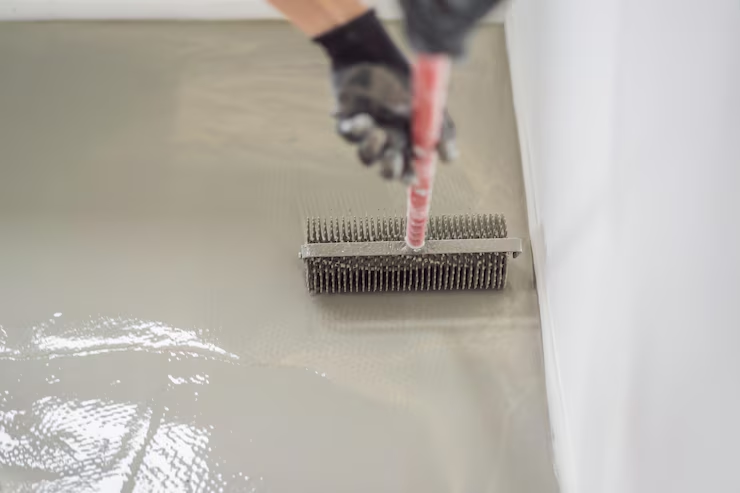Liquid membrane for roof waterproofing The question of whether to use polyurea or concrete is a crucial one for building owners and installers. Choosing the right material both increases the structure's durability and reduces long-term maintenance costs. However, to make the right choice, the technical properties, ease of application, and durability of both materials must be carefully considered.
What is Liquid Membrane and How is it Applied?
Liquid membrane is an insulation material applied in liquid form to prevent water penetration on roofs. After application, it cures to form a flexible, waterproof, and durable layer. This system is particularly advantageous on roofs with complex surfaces because its liquid structure allows it to spread easily across the entire surface.
Moreover, Differences between liquid membranes and bitumen membranes When examined, liquid membranes stand out for their flexibility of application and ease of maintenance. However, surface preparation is a critical element in these systems. Weak surfaces can lead to loss of adhesion. Therefore, cleaning the surface and applying a primer before application is recommended.
Properties of Polyurea Coatings
Polyurea coating systems are one of the most reliable alternatives for high-performance waterproofing solutions. They cure quickly and provide excellent mechanical strength. They also offer high resistance to UV rays.
These systems are particularly preferred for industrial roofs because they offer a long-lasting solution in terms of both waterproofing and surface durability. The resulting flexible coating has a high tolerance to thermal expansion. Sempoly Polyurea solutions provided by maintain their effectiveness in different climatic conditions.
Differences Between Liquid Membrane and Polyurea
There are several technical differences between liquid membranes and polyurea coatings. Polyurea, with its superior durability and rapid curing, is preferred in professional projects. However, the nature of the application area, intended use, and maintenance conditions should also be taken into consideration when making your selection.
For example, insulation products suitable for interior and exterior spaces While polyurea stands out for its high mechanical resistance, liquid membranes are preferred in lower-cost areas. Both systems provide long-lasting results when applied correctly.
Material Selection According to Application Area
The roof surface can be concrete, metal, or ceramic. In this case, the material used must be compatible with the structure. Polyurea coatings are preferred because they provide seamless integrity, especially on large surfaces. However, for smaller roofs, liquid membrane application offers both an economical and practical solution.
The equipment used during application is also important. While polyurea application requires professional equipment, liquid membranes can be applied with simpler tools. Sempoly gallery page When examined, examples can be seen where both systems have been successfully implemented in different projects.
Professional Roof Insulation Solutions with Sempoly
Roof insulation Correct application is as important as the selection of the right materials in your projects. A terrace project with renewed insulation using Sempoly As in the example, polyurea and liquid membrane systems offer excellent results with professional planning.
Moreover, Sempoly's contact page By consulting with expert teams, you can select the system appropriate for your project requirements. With accurate analysis, you can achieve a long-lasting, aesthetically pleasing, and economical roof insulation solution.


